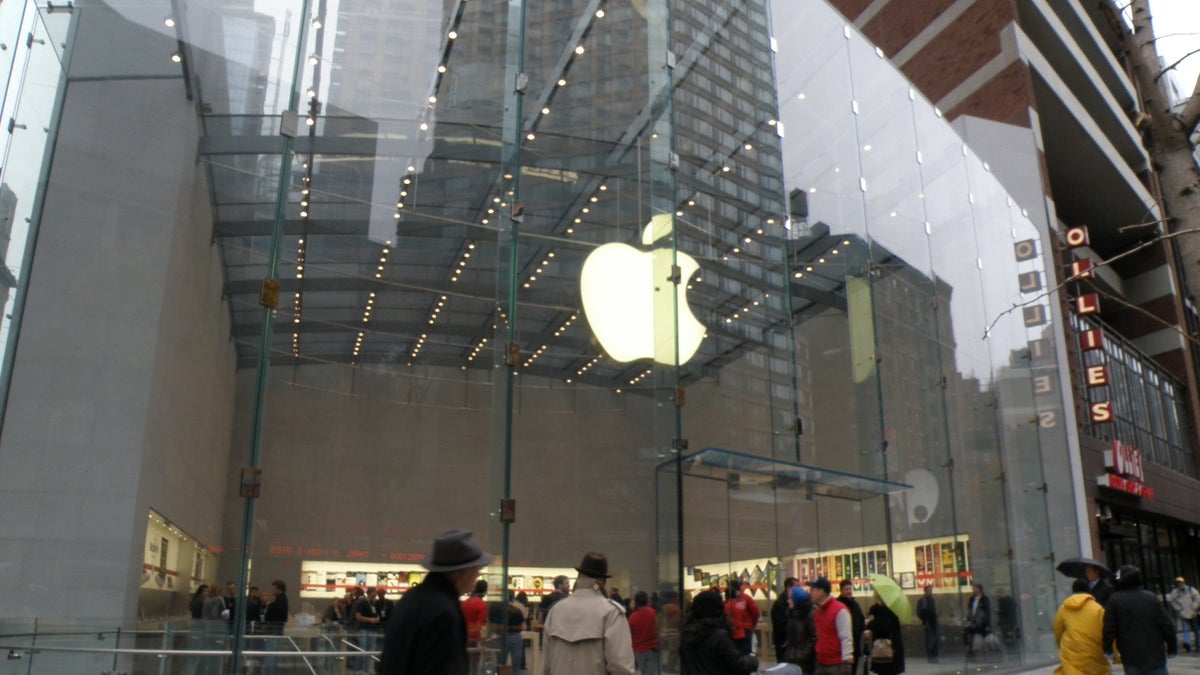Apple banks on retail stores
Apple's latest store in Manhattan is part of a bigger plan to win new customers through its retail strategy.

NEW YORK--Apple hopes to grow its market share with an increasingly aggressive retail strategy that includes opening bigger stores in more locations.
At a media preview of its fourth store here, which is located on the Upper West Side, Ron Johnson, Apple's senior vice president of retail, said Apple's retail strategy is all about getting consumers to switch from PCs to Macs.
"Our Apple stores are a magnet for switchers," he said. "About half the people who come into our retail locations are first-time Mac buyers."
Johnson said that Apple's Genius Bar, which provides face-to-face customer service and support, and other services, allow people to switch from a PC to a Mac with confidence. For example, Apple offers its One-to-One service, which allows new Mac users to drop off their old computer so that files can be transferred from the older computer to a new Mac.
The service, which costs $99 for one year, then allows users to meet one-on-one with an Apple representative to discover where the new content is on the computer and to learn how to use more advanced features. Customers can use the one-on-one instruction service as much as they like for that one-year period.
Johnson also said that the Apple stores provide a good way for customers to test out and play with new products before they buy them. Even if customers don't buy their Mac, iPhone, or iPod in the Apple store, the experience they get from looking at it in the store is often enough to help them make a purchasing decision.
The strategy seems to be working. Apple has been increasing its overall sales and market share for its products over the past year, particularly for its Macs. In the third quarter of 2009, the company sold about 3 million new Macs, which was a 17 percent increase compared to a year earlier, according to IDC. This was well ahead of the overall global PC market, which grew by only about 2 percent, according to IDC. For 19 of the last 20 quarters, Apple has outpaced the market in terms of sales.
Even though overall sales have increased, Apple hasn't made huge gains in market share. But it has made modest improvements. Over the past year, the company has managed to bump its market share up to 9.4 percent in the third quarter of 2009 from about 8.6 percent in the third quarter of 2008. Apple is in fourth place in the overall computer market, lagging PC makers Hewlett-Packard, Dell, and Acer.
In 2001 when Apple opened its first store, plenty of people questioned whether Apple's retail strategy would even work. But eight years and 279 stores later, the retail business has become a big revenue driver for the company. In fiscal 2009, Apple generated $6.6 billion of the company's $29.9 billion in revenue from its retail stores, Johnson said.
Some of the stores, such as the Fifth Avenue store in Manhattan, which sits below a glass cube across the street from the Plaza Hotel, have become tourist destinations.
Apple purposely puts stores in high-traffic areas to attract customers, Johnson said. And in the case of big stores like the ones in Manhattan, it's also important to put them where people visit. Worldwide some 170 million visitors entered an Apple store in fiscal 2009.
Apple's flagship stores, or as the company calls them "significant stores," are especially designed to draw in visitors with eye-catching design and architecture. And the new Upper West Side store at Broadway and 67th Street is no exception. The new store features a glass roof, the first ever for an Apple store. And it also features 45-foot-tall stone walls, a large ground floor to showcase products, and a glass spiral staircase that leads to the lower level of the store where Apple provides service.
Apple plans to open between 40 and 50 new retail stores in 2010. More than half of these new stores are expected to be outside the U.S. Some of the countries where Apple will open new stores include the United Kingdom, Canada, Australia, Italy, Switzerland, Germany, France, and China, Johnson said.
Apple's main competitor, Microsoft, is trying to emulate Apple's retail success by opening up stores of its own. Recently, the software maker opened locations in Scottsdale, Ariz., and Mission Viejo, Calif.
Apple's latest Manhattan store on Broadway at West 67th Street will open to the public at 10 a.m. EST on Saturday.

